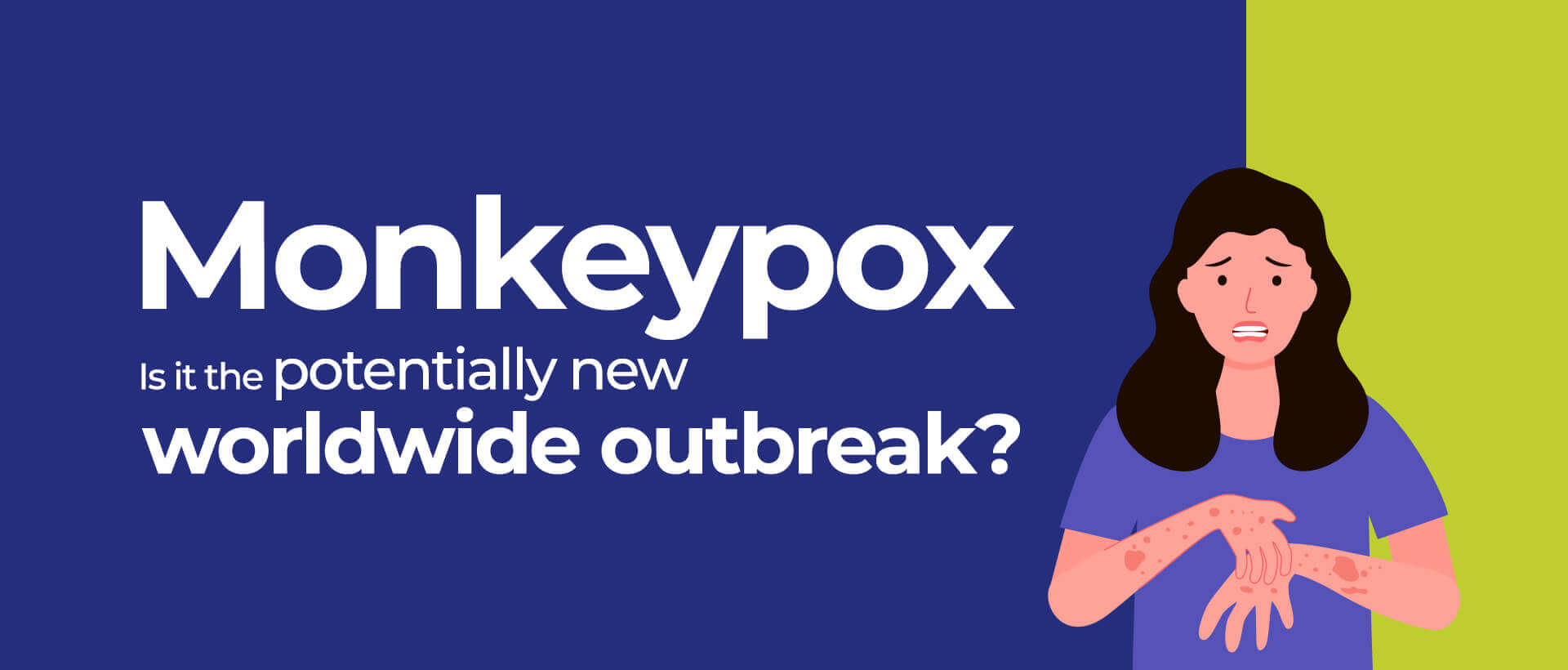

by Yasser Arafath
Monkeypox: Is it the potentially new worldwide outbreak?
Monkeypox is a vesicular-pustular illness that carries a secondary attack rate in the order of 10% contacts among the unvaccinated population against smallpox. The mortality rates range from 1 to 11% but scarring and few other clinical presentations are common symptoms among patients. This disease continues to cause outbreaks in remote populations in Central and West Africa and it is now trying to spread to other parts of the world as well.
The disease Monkeypox is a zoonotic infectious disease characterised by a pustular red rash that is difficult to distinguish from smallpox and the severity of the illness may range from very mild to very deadly. In Monkeypox human-to-human transmission is limited, but the longest evidenced chain of transmission is up to six generations from the patient, meaning that the last person to be infected in this chain was 6 links away from the original patient infected. Transmission of the disease is due to direct contact with bodily fluids, lesions, cuts on the skin or internal mucosal surfaces of organs, such as in the mouth or throat, respiratory droplets, and contaminated objects.
Do you know what are the typical symptoms of monkeypox?
The typical symptoms of Monkeypox are fever, a characteristic red rash and usually swollen lymph nodes. For clinicians, it is extremely important to distinguish monkeypox from other diseases like chickenpox, measles, bacterial infections, fungal skin infections, scabies and medicine related all.
The journey of disease:
The primary incubation period of monkeypox ranges from 5 to 21 days. The febrile stage of illness usually lasts 1 to 3 days with symptoms including fever, intense headache, lymphadenopathy (swelling of the lymph nodes), back pain, myalgia (muscle ache), and an intense asthenia (lack of energy). The febrile stage is followed by the skin eruption stage, lasting for 2 to 4 weeks. Lesions evolve from macules (lesions with a flat base) to papules (raised firm painful lesions) to vesicles (filled with clear fluid) to pustules (filled with pus), followed by scabs or crusts.
The proportion of patients who die is up to 11% in documented cases and has been higher among young children.
How is Monkeypox diagnosed?
The most preferred diagnostic tool is the polymerase chain reaction (PCR) laboratory test for monkeypox. The best diagnostic specimens are directly from the rash – skin, fluid or crusts, or biopsy wherever possible. Antigen/ antibody detection techniques of diagnostics may not be the choice for clinicians as they do not distinguish between categories of orthodox viruses.
Future Prospects:
Treatment of monkeypox patients is often symptomatic and dependent on the severity of symptoms. Numerous single and combination drugs that could prove effective against monkeypox virus infection are being researched and tested currently by pharma companies.
As an important precautionary measure, any direct contact with sick or dead animals should be avoided under all circumstances, and all foods containing animal meat or parts need to be properly cooked before eating.
People have become more susceptible due to the termination of routine smallpox vaccination, which offered some cross-protection in the past. Vaccination against smallpox with first-generation vaccinia virus-based smallpox vaccine was shown to be 85% effective in preventing monkeypox in the past. Family and community members, health workers and laboratory personnel who were vaccinated against smallpox in childhood may have some protection against monkeypox.






